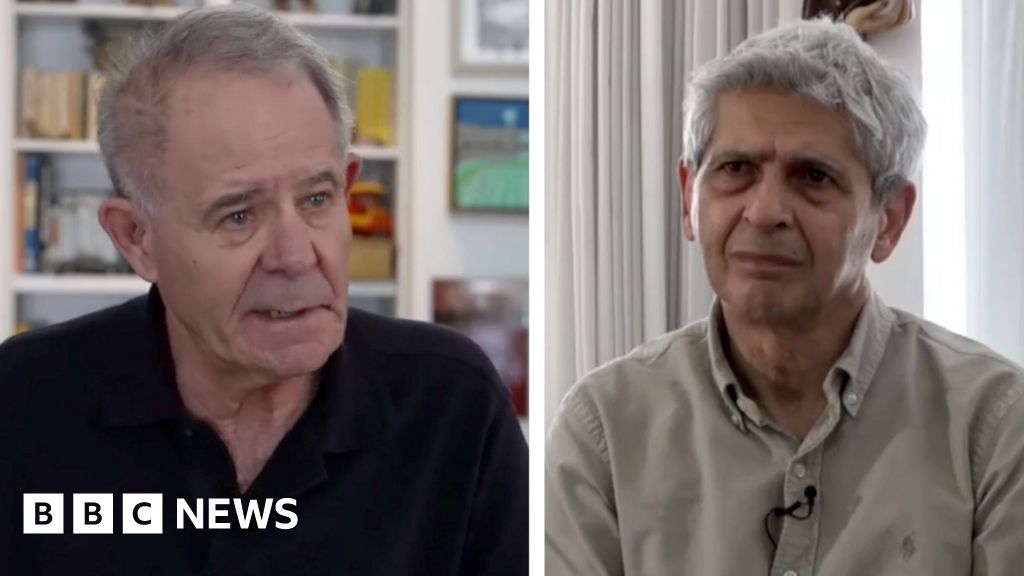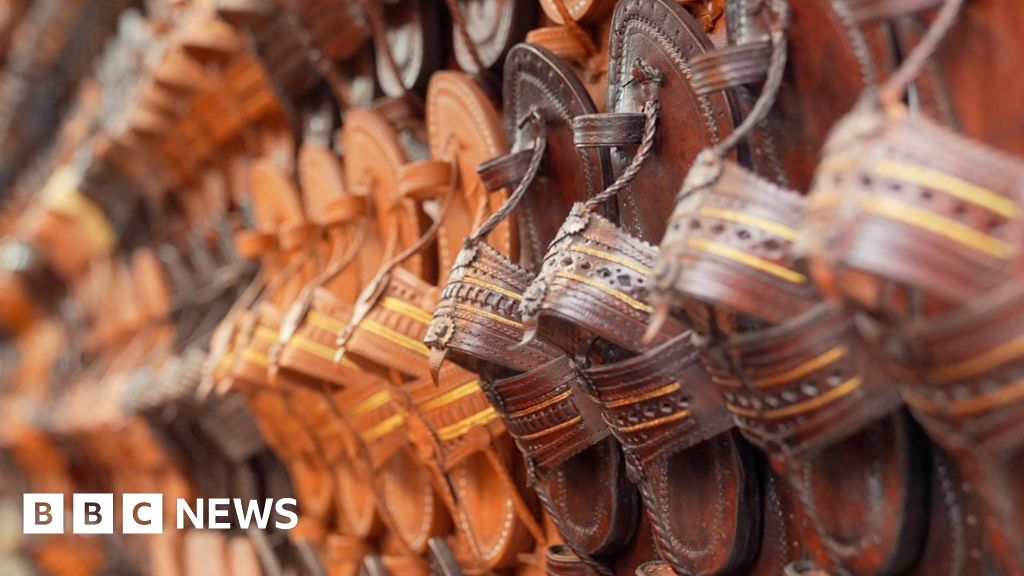The two women are a coil of contradictions: Roman but also Greek, flesh but also stone. They both are confident, blessed with the poise of the noble and famous, yet also slightly shy. As if, after centuries of gazes, they can only appear before us slightly abashed. As if they know there is such a thing as too much beauty.
One of them is gazing down,
and one of them is gazing up.
“They stand before us like real human beings,” as the art historian Ernst Gombrich once wrote about classical sculpture, “and yet as beings from a different, better world.”
The younger of these two women is known to historians as the “fanciulla di Vulci”: a girl, or maiden, from one of the richest archaeological sites in Italy. Sculpted in the mid-first century B.C., the last years of the Roman Republic, she was pulled from the ground in the latter part of the 19th century.
Her braided hair, pulled tightly around her head, remains bound in a large circular knot:
Was this a funerary statue, commissioned by the parents of a young woman who died before she could marry? There’s no way to be certain.
But her stone earlobes are pierced. In antiquity, she would have worn earrings. The depressions in her eyes would have been inlaid with smooth ivory or glistening rock crystal.
The other woman, the older one, has an equally intricate hairstyle, though her coif is more majestic. She’s really not a woman at all, I suppose, but the goddess Aphrodite, looking to the right, crouching down, covering her breasts. It’s a pose that was first elaborated by a Greek artist, and later adapted throughout the Roman Empire.
At her foot is a honking swan. Coiling up her left biceps is an armband in the form of a snake:
Two women, two relics of Rome — but then again, not quite. There is a big difference between these two sculptures, which you can only see if you look them in the eyes.
The girl’s wide irises may be missing their inset stones, but she is gazing up at us from a distance of 2,000 years.
The goddess seems to be doing the same — but hold on. Look a little lower, at her neckline. See how the sour-cream marble of her head suddenly gives way to a stone that’s visibly more lemony, more weathered.
Only Aphrodite’s crouching body comes from the first century A.D. The arm with the snake bangle is from antiquity, but the head was sculpted and grafted onto the goddess’s decapitated body 1,600 years later, during the later Renaissance, by the artist Pietro Bernini (father of the much more famous Gian Lorenzo Bernini).
Members of the noble family that once owned this fragmentary Venus turned to their own generation’s artists to resuscitate her. Her downcast eyes are modern. Some talent and a fortune could bring the gods back to earth.
Old and new. Real and ideal. Life and immortality. Everything we ask of art is in the eyes of these women, just two of the 58 extraordinary works of “Myth and Marble: Ancient Roman Sculpture From the Torlonia Collection,” at the Art Institute of Chicago. The exhibition brings to light the last of Rome’s princely art collections, which was out of sight for the better part of a century. (The show tours to Fort Worth later this year, and to Montreal in 2026.)
Built up through successive acquisitions of aristocratic collections, it spills over with 622 sculptures — that’s 621 marbles and one astounding bronze, of the Roman general Germanicus, right arm raised in glory, pecs and abs undulating like ski moguls. The quality is astounding. To see finer holdings of Roman art, you’d have to go to the Vatican or the Louvre.
Much of the collection consists of portrait busts of emperors and eminences, which the Torlonia banking family — and principally Prince Alessandro Torlonia (1800-66), who elevated his family’s collecting into a scientific enterprise — admired for their projection of power and prestige.
An imposing display in Chicago of imperial busts leads from Hadrian, instantly recognizable with his stern mien and tight beard,
to his successor but one, Marcus Aurelius, philosopher-emperor, wearing a shaggier beard in imitation of his favorite Greek thinkers:
But the busts are just the half of it. There are marbles after mythological and literary themes, such as Odysseus escaping from the Cyclops’ den beneath a shaggy-coated ram,
as well as some rare examples of intact large-scale funerary monuments. There’s a sarcophagus of remarkable refinement, ringed on all four sides with scenes of the labors of Hercules:
In the leftmost niche, we see the strongman wrestle the Nemean Lion. In the next, wearing the lion’s skin, he clubs the human-headed Hydra.
Astoundingly, the sarcophagus’s lid is here, too. The deceased couple once inside the marble box were also represented on top, reclining at some eternal banquet. But don’t assume too much from their faces. The heads you see now belonged to some other Roman husband and wife, and were soldered on in modern times.
Even if you treat it as just a showcase of Roman sculpture, “Myth and Marble” would deserve all its laurel wreaths. But it’s about more than antiquity. It’s also about the recent past, about a special collection with a curious history — which almost no one saw for 75 years.
The Torlonia collection, which Alessandro Torlonia moved into a private museum in Rome in 1875, went into hiding in the early 1940s. And when World War II was over, they did not re-emerge.
Disputes among family members and with the government left the marbles hidden away, gathering dust and grime.
For all those years scholars had to beg and bribe to get in. One government official, desperate to see what gems the Torlonia prince had immured, resorted to dressing up as a cleaner.
The only hint of the prizes locked inside those damp Trastevere storerooms was an old catalog, published in 1885, that reproduced all of the marbles with a then-novel technology of camera-based engraving.
At last, the first restored masterpieces went on display at the Capitoline Museums in 2020. Like the exhibition in Chicago, that show included sculptures that scholars knew only from that old catalog, such as the grand goat reclining in majesty — its fur swirling like marble flames, and its bemused head restored by Gian Lorenzo Bernini himself.
And as the public has discovered these once secret masterpieces, the Torlonia Foundation has used the successive traveling shows to repair and restore its holdings. In Chicago, no fewer than 24 of the 58 sculptures are newly cleaned.
The premieres include several busts of eminent imperial women, such as Faustina the Younger, the daughter of Antoninus Pius and the wife of Marcus Aurelius. Look down, from her pulled-back hair to the full cheeks. You are looking at a projected image of the stable imperial succession.
Earlier versions of the Torlonia show emphasized the development of the collection over the 19th century, which the banking family amassed by purchasing entire collections from aristocrats who’d fallen on hard times. The family also undertook large excavations in the Italian countryside that, with varying degrees of care, disentombed masterpieces like the young maiden of Vulci.
In Chicago, the history of collecting is pushed to one side. But by cunningly installing the sculptures in the Art Institute’s spare modern extension, designed by Renzo Piano, the curators have emphasized a different side of the Torlonia Marbles. In powerful sequences of white on white, they impel us to reckon with these “Roman” artworks as time travelers.
In the last century, fascists of various stripes projected national fantasies onto cold stones like these — and online today, sophomoric social-media Hellenists power racist delusions of the past with Greek and Roman statuary.
But nothing here looks anything like it would have in ancient Rome. Most are elisions of ancient marble with freshly quarried replacements. Our image of antiquity arrives to us only after centuries of remaking and recycling, interchange and intermarriage.
Rome was a multiethnic, multilinguistic empire, happy to adopt wholesale an entire foreign religious pantheon. Its architecture, its literature, its educational curriculum and especially its statuary derived from a distant society it had conquered. (This is the place to quote Horace, on the cultural endurance of an occupied people: “Captive Greece took captive her fierce captor, and brought the arts to rustic Latium.”)
And the elite Romans immortalized in these marble busts spoke Greek as a matter of course.
Look at the stupendous Portus Relief: a vision of the capital’s imperial harbor, sitting at the mouth of the Tiber. Here is a slab of carved marble, full of merchant ships and far-sailing seamen,
overlooked by shaggy-haired Neptune, imported without qualm from one sea to another.
We don’t know enough about just who made these marbles, but scholars have assumed that most “Roman” artists were Greeks, probably slaves or freedmen, who borrowed and adapted famous Hellenic examples for local audiences.
One of the Torlonia collection’s most impressive artworks, a 16-foot-tall statue of the goddess Hestia (or Vesta to Romans), is also one of its most intentionally archaic. Known as the Hestia Giustiniani, it dates from Hadrian’s time, but the front-facing pose and rigid drapery replicate a Greek bronze from the fifth century B.C.
It was a world of avatars and images, cults and commemorations. There were so many statues in ancient Rome that observers spoke of a second Roman population made of stone and bronze. Living politicians could become marble gods, present in public spectacles and private homes.
The finest feelings became intertwined with the bluntest propaganda. Corruption, violence, unashamed imperialism: All this could coexist with the most sophisticated cultural endeavors, which would endure and even mature as the republic transitioned into an autocracy.
These statues ask: What is power, who is worthy of it, and how long can it last? What is a culture, what happens when it encounters others, and how is it remade through contact and conquest?
The cultural tradition that gave us our laws and our language has always positioned these stone faces and bodies as an art for all time. In 2025, when the most fundamental matters of state and self are on the line, it feels more like the art of the hour. Because we are time travelers, too, blundering backward and forward, unsure which direction is even which. We live in ruins, and salvage from the marble at our feet what values and virtues we can.
Myth and Marble: Ancient Roman Sculpture From the Torlonia Collection
Through June 29 at the Art Institute of Chicago, artic.edu. The show travels to the Kimbell Art Museum in Fort Worth on Sept. 14 and to the Montreal Museum of Fine Arts in March 2026.
Images: “Statue of Crouching Aphrodite,” via Fondazione Torlonia, photo by Agostino Osio; “Portrait of a Young Woman,” via Torlonia Foundation, photo by Lorenzo De Masi; Back of “Portrait of a Young Woman,” via Fondazione Torlonia, photo by Agostino Osio; “Installation view of ‘Myth and Marble: Ancient Roman Sculpture from the Torlonia Collection,’” via Fondazione Torlonia, photo by Agostino Osio; “Portrait of Hadrian,” via Torlonia Foundation, photo by Lorenzo De Masi; “Portrait of Marcus Aurelius,” via Fondazione Torlonia, photo by Agostino Osio; “Statue of Odysseus Beneath the Ram,” via Fondazione Torlonia, photo by Agostino Osio; “Sarcophagus depicting the Labors of Hercules,” via Torlonia Foundation, photo by Lorenzo De Masi; “Lid with Reclining Couple,” via Torlonia Foundation, photo by Lorenzo De Masi; “Museo Torlonia Catalogue,” via Fondazione Torlonia, photo by Franco Bocchino; “Statue of a Resting Goat,” via Torlonia Foundation, photo by Lorenzo De Masi; “Portrait of Faustina the Younger,” via Torlonia Foundation, photo by Lorenzo De Masi; “Installation view of ‘Myth and Marble: Ancient Roman Sculpture from the Torlonia Collection’ as installed at the Art Institute of Chicago,” via Torlonia Foundation, photo by Lorenzo De Masi; “Portrait of a Man, known as the Old Man of Otricoli,” via Torlonia Foundation, photo by Lorenzo De Masi; “Portus Relief,” via Torlonia Foundation, photo by Lorenzo De Masi; “Statue of a Goddess, known as the Hestia Giustiniani,” via Torlonia Foundation, photo by Lorenzo De Masi; “Statue of Emperor on Throne with Portrait of Augustus,” via Torlonia Foundation, photo by Lorenzo De Masi; “Installation view of ‘Myth and Marble: Ancient Roman Sculpture from the Torlonia Collection’” via Fondazione Torlonia, photo by Agostino Osio.
Source link


















